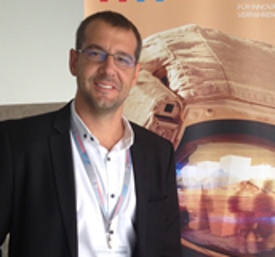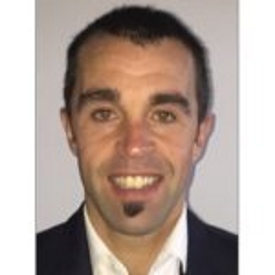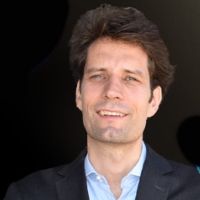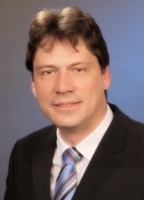Plenary speakers
Plenary Speakers
|
| |
|---|---|
|
Dr. Fernando Lasagni | Making fly Additive Manufactured aerospace hardware: considerations along the value chain BIO Ph.D. in Materials Science from the Vienna University of Technology in 2006 dedicated to the investigation of light alloys and composites materials. He was laureate in 2007 with the Fritz-Grasenick Prize of the Austrian Society of Electron Microscopy. During 2008 he was involved in the development of novel porous materials for heat pipes at IberEspacio S.A. (Madrid, Spain). From September 2008 he is the head of the Materials and Processes department at CATEC, with focus on Additive Manufacturing technologies, NDT and testing. Mr. Lasagni has also a scientific record of more than 170 contributions in international peer-reviewed journals, conference proceedings and participation. He acted as well as Spanish representative during Additive Manufacturing harmonization meeting at ESA in 2014 and 2017. Coordinator of the AM group at the Spanish Aerospace Platform. Georg Sachs prize of the German Society of Materials (DGM) in 2018. |
|
Andoitz Aranburu | Fagor production installations for lightweight technologies BIO Andoitz Aranburu got his mechanical engineering degree in 1998 in Mondragon University after 4 years. He started working in Fagor Arrasate in 1997 as mechanical press designer and in 2002 continued as responsible for the design of mechanical installations. He currently works since 2011 as responsible for innovation department of Fagor Arrasate Automotive division, working in several projects related with the Fagor Arrasate’ s technological roadmap, such as energy efficiency, intelligent installations, productivity, new products and services, reliability, and service platforms. |
|
Prof. Dirk Mohr | Recent advances on predicting ductile failure BIO Dr. Dirk Mohr currently holds the Chair of Computational Modeling of Materials in Manufacturing at ETH’s Department of Mechanical and Process Engineering (MAVT). He joined the faculty of ETH in 2015 after conducting research at the Solid Mechanics Laboratory at Ecole Polytechnique (France) and MIT’s Impact and Crashworthiness Lab. He was educated in Structural and Computational Mechanics at the University of Karlsruhe (Germany), the Ecole Nationale des Ponts et Chaussées (France) and the Massachusetts Institute of Technology (USA), where he received his PhD in Applied Mechanics in 2003. Professor Mohr's research activities include impact engineering, ductile failure of sheet metal and the mechanics of metamaterials. He is Associate Editor of the International Journal of Impact Engineering and the International Journal of Solids and Structures. |
|
Prof. Takayuki Hama | Crystal plasticity modelling for sheet metal forming BIO Dr. Takayuki Hama is currently an Associate Professor in the Department of Energy Science and Technology at Kyoto University. He received his BE (1999), ME (2001), and PhD (2004) from the Department of Mechanical Engineering at Waseda University. He then joined the Graduate School of Energy Science at Kyoto University as an Assistant Professor, where he currently serves as an associate professor since 2010. His primary research interests are forming and modelling of sheet metals. He has been working on experiment and finite-element simulation of springback of various sheet metals, including high tensile strength steel, magnesium alloy, titanium alloy, and aluminum alloy sheets. His recent researches focus on crystal plasticity modelling of these sheet metals. Specifically, he carefully compares simulation results of work-hardening behavior under a variety of loading paths, including tension, compression, reverse loading, simple shear and biaxial tension, with experimental results to validate models, to understand underlying deformation mechanism and eventually to utilize developed models for sheet-metal forming simuations. |
|
Mathias Peter Hartmann, PhD | Composites forming – from manual prepreg layup to modeling integrated process control, a continuing quest BIO After receiving his diploma in aeronautics engineering, Mathias Hartmann has been working for FACC AG, Austria, as a stress engineer at the material review board (MRB) from 2007 to 2009. Starting to work as a research assistant at TUM in 2010, he has been establishing the area of curing simulation and PID analysis at the Chair of Carbon Composites, leading the research team “Compaction, Curing and Consolidation Simulation” since 2012. He has earned his PhD with the dissertation “Analysis and Compensation of Process Induced Deformations in Composite Structures”. With a strong background on both structural analysis and process modeling, he took on the responsibility for the simulation group at the Chair of Carbon Composites in 2016. |






